Spiral Magnetic Separator CFD Simulation
$180.00 Student Discount
- This study investigates the performance of a spiral magnetic separator using ANSYS Fluent.
- The geometry, representing a spiral-shaped separator with multiple turns, is designed in ANSYS SpaceClaim and meshed using ANSYS Meshing.
- The simulation is conducted as a steady-state analysis with a pressure-based solver.
- The Realizable k-epsilon turbulence model is employed, along with a two-way coupled Discrete Phase Model (DPM) for particle simulation.
- The Magnetic Induction MHD Method is enabled to model the applied magnetic field, with User-Defined Functions (UDFs) implemented for magnetic field components.
- Results reveal complex interactions between fluid flow, magnetic particles, and the applied magnetic field, demonstrating the separator’s effectiveness in particle segregation.
To Order Your Project or benefit from a CFD consultation, contact our experts via email ([email protected]), online support tab, or WhatsApp at +44 7443 197273.
There are some Free Products to check our service quality.
If you want the training video in another language instead of English, ask it via [email protected] after you buy the product.
Description
Spiral Magnetic Separator CFD Simulation using ANSYS Fluent
Introduction
This study investigates the performance of a spiral magnetic separator using Computational Fluid Dynamics (CFD) analysis. The simulation aims to understand the complex interactions between the fluid flow, magnetic particles, and the applied magnetic field within the separator. This research provides valuable insights into the separation efficiency and flow behavior in magnetic separation systems by employing advanced models for turbulence, discrete phase modeling, and magnetohydrodynamics.
The simulation focuses on a scenario where water enters the domain from the upper boundary, carrying magnetic particles and SiO2 particles. The applied magnetic field, represented by user-defined functions (UDFs) for B_x, B_y, and B_z components, influences the trajectory of the magnetic particles, allowing for their separation from the non-magnetic SiO2 particles.
The simulation was conducted using ANSYS Fluent software, employing a steady-state, pressure-based solver to capture the flow characteristics and particle behavior. The geometry consists of a spiral-shaped separator with multiple turns designed in ANSYS SpaceClaim and then meshed in ANSYS Meshing to enhance the separation process.
Methodology
The Realizable k-epsilon model with Standard wall function was used to account for turbulent flow within the separator.
Discrete Phase Model (DPM): A two-way coupled DPM was implemented to simulate the behavior of both magnetic and SiO2 particles. The interaction between the particles and the continuous phase (water) was enabled.
Group Injection type was defined for both magnetic and SiO2 particles, with diameter distributions based on the Rosin-Rammler model.
The Magnetic Induction MHD Method was enabled with a DC Field type to simulate the effects of the applied magnetic field on the flow and particle behavior.
User-Defined Functions (UDFs): Several UDFs were implemented to define the source terms for the magnetic field components (B_x, B_y, and B_z).
Results
- Magnetic Field Distribution:
– The B_y component shows a range of -1.5347e-15 to 1.7298e-15 Tesla, with alternating positive and negative regions along the spiral.
– The B_z component ranges from -1.0879e-14 to 8.7105e-16 Tesla, displaying a similar alternating pattern.
– The B_x component shows a range of -3.79e-15 to 4.40e-15 Tesla, with a complex distribution along the spiral path.
- Flow Characteristics:
– The static pressure distribution ranges from -0.84606 to 4.6414 Pa, with higher pressures observed near the outer walls of the spiral.
– Velocity magnitude varies from 0 to 0.13735 m/s, with higher velocities observed near the inner walls of the spiral.
- Particle Behavior:
– Particle tracks show the distribution of particles throughout the separator.
– Particle diameters range from 1.00e-04 to 2.96e-04 m, indicating a polydisperse mixture.
– The static pressure experienced by particles ranges from -8.94380 to 9.69623 Pa.
- Flow Pathlines:
– Pathlines colored by B_x and velocity magnitude demonstrate the complex spiral flow pattern within the separator.
– Velocity magnitudes along pathlines range from 0 to 0.181 m/s, with higher velocities observed in the upper turns of the spiral.
- Separation Efficiency:
– The particle tracks suggest a gradual separation of particles based on their magnetic properties and sizes, with larger and more magnetic particles concentrating towards the outer walls of the spiral.
This CFD simulation of a spiral magnetic separator provides a comprehensive understanding of the complex interplay between fluid dynamics, particle behavior, and magnetic fields. The results demonstrate the effectiveness of the spiral design in creating a prolonged separation path, allowing for enhanced particle segregation. The varying magnetic field strengths and flow velocities along the spiral contribute to the separation process, with particles experiencing different forces based on their position within the separator.
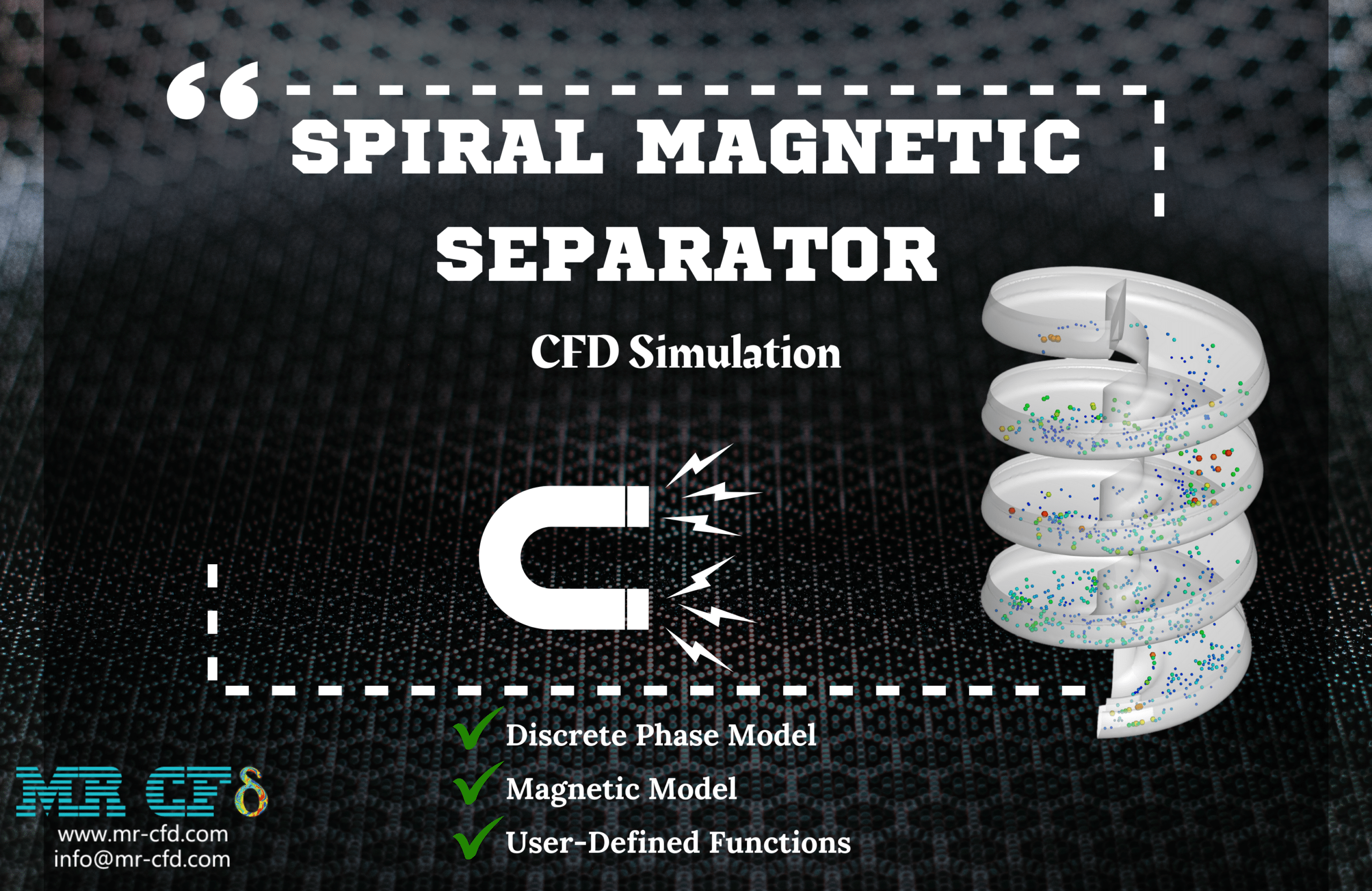
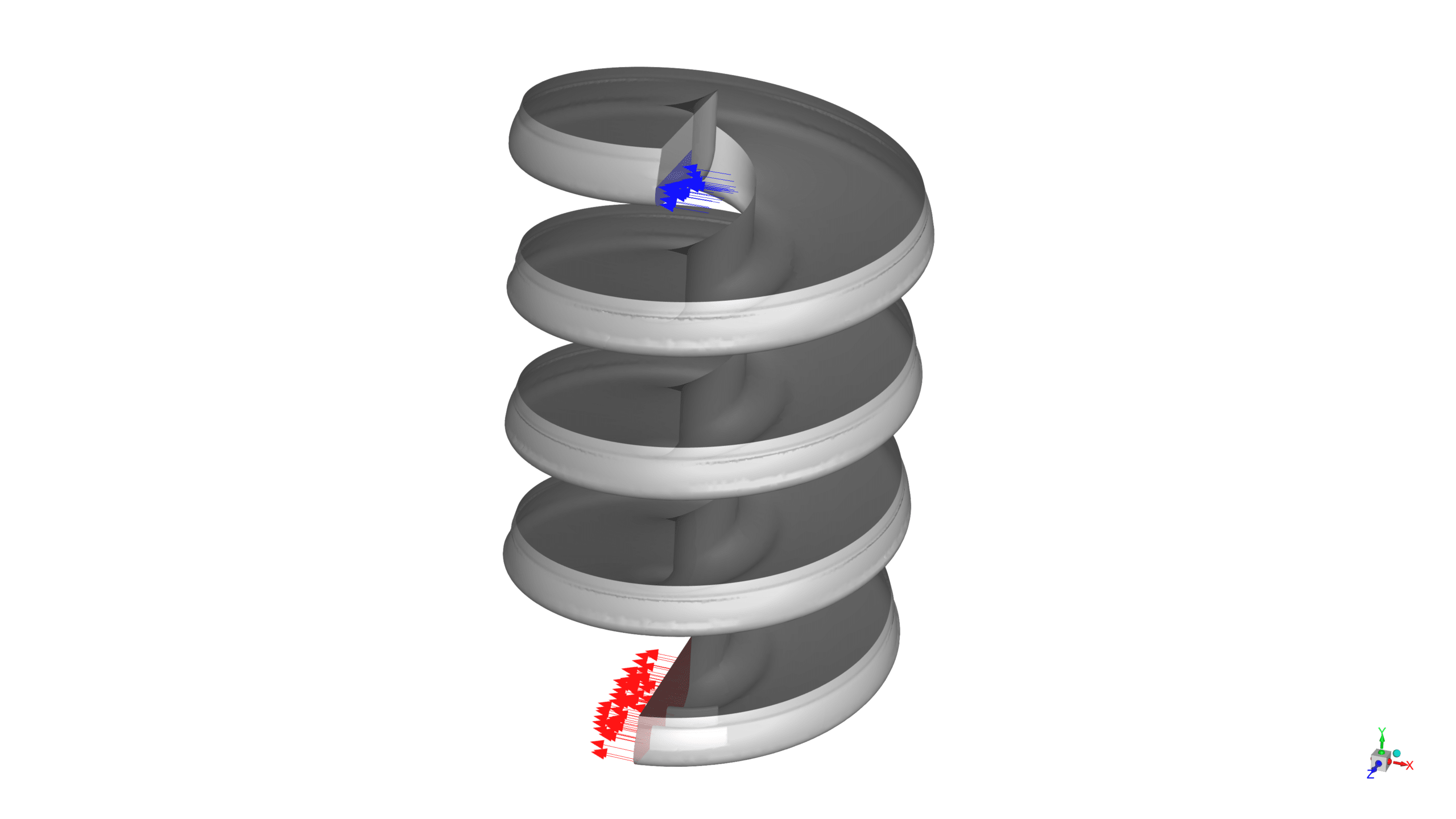
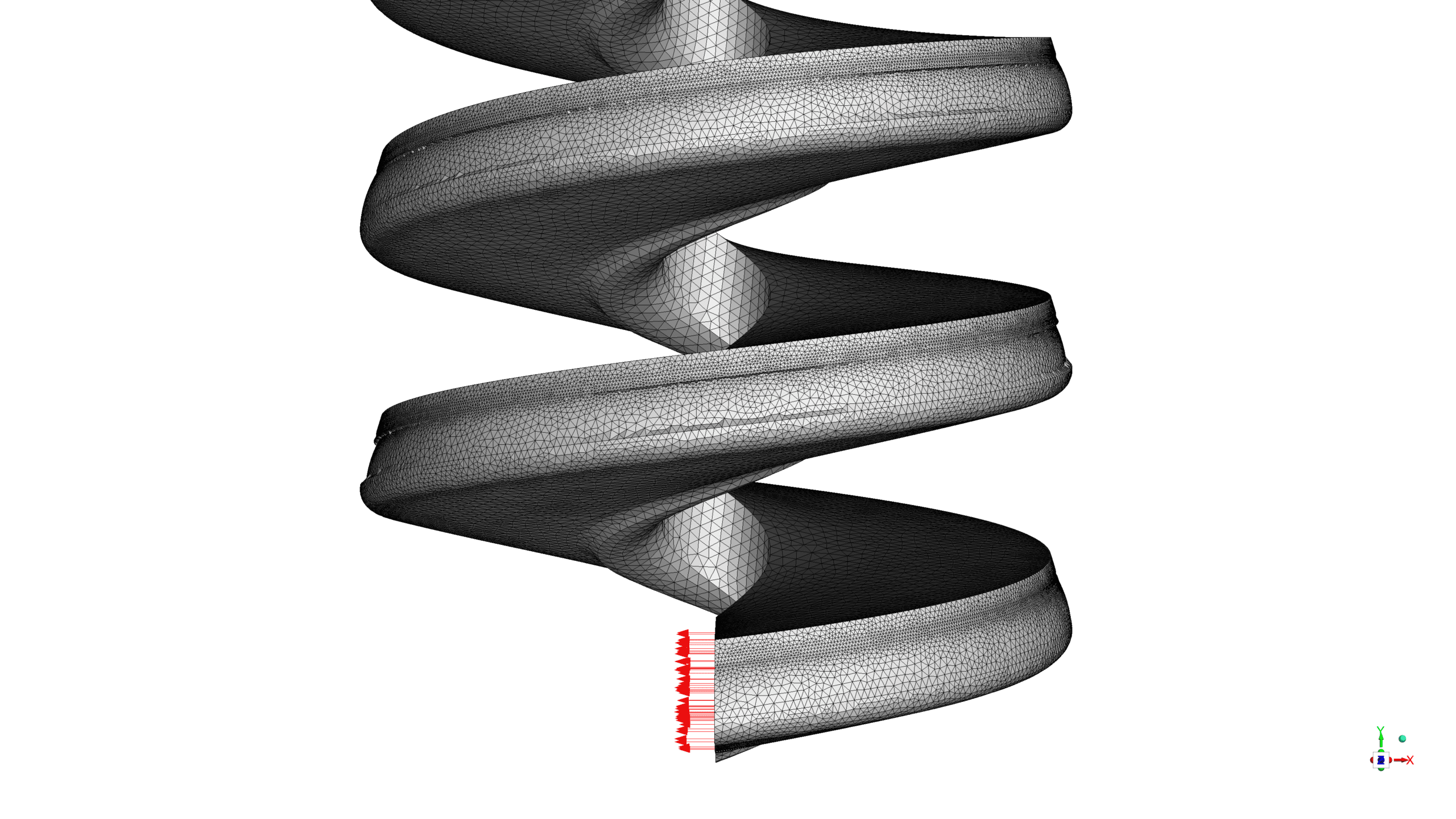
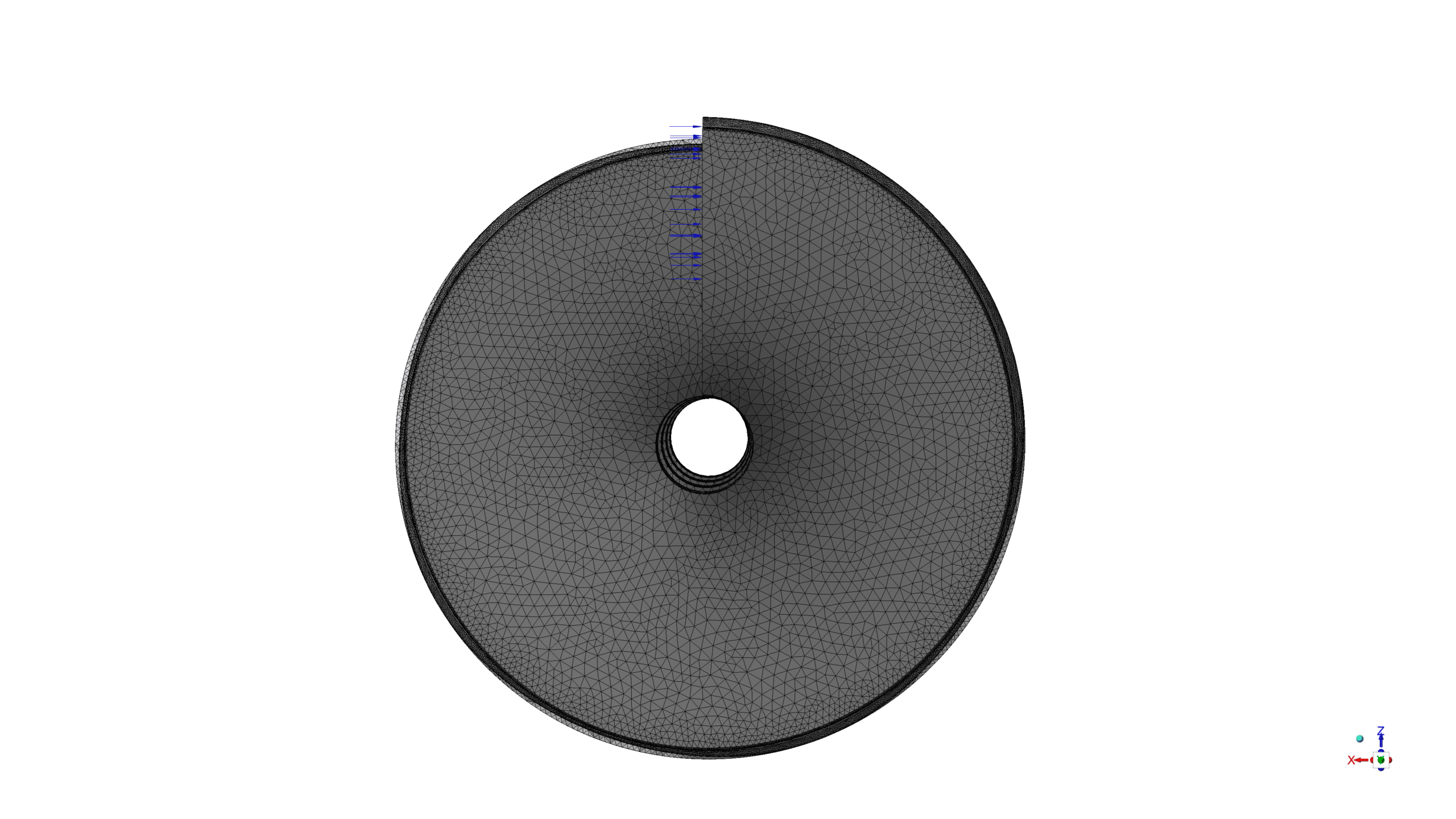
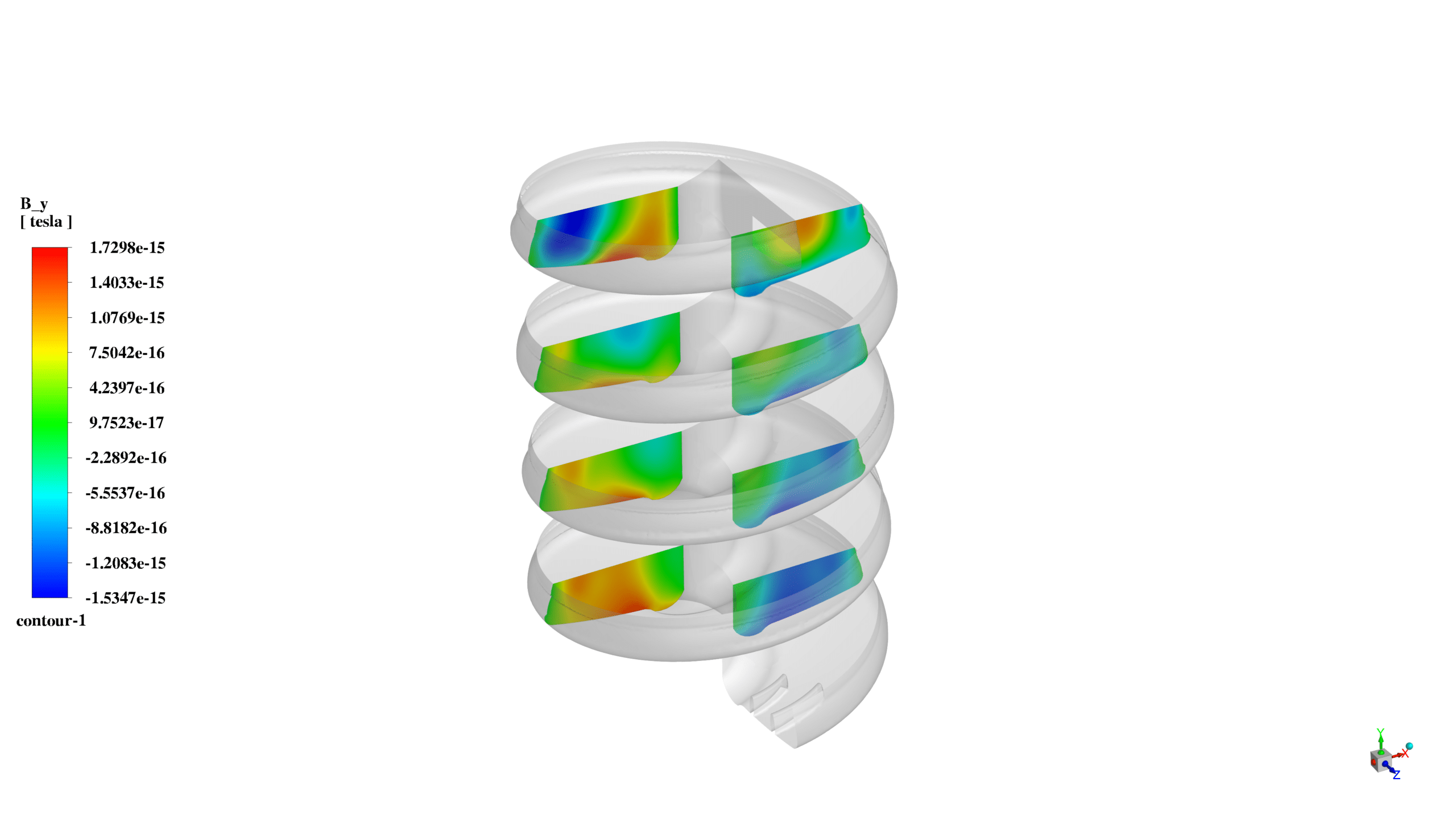
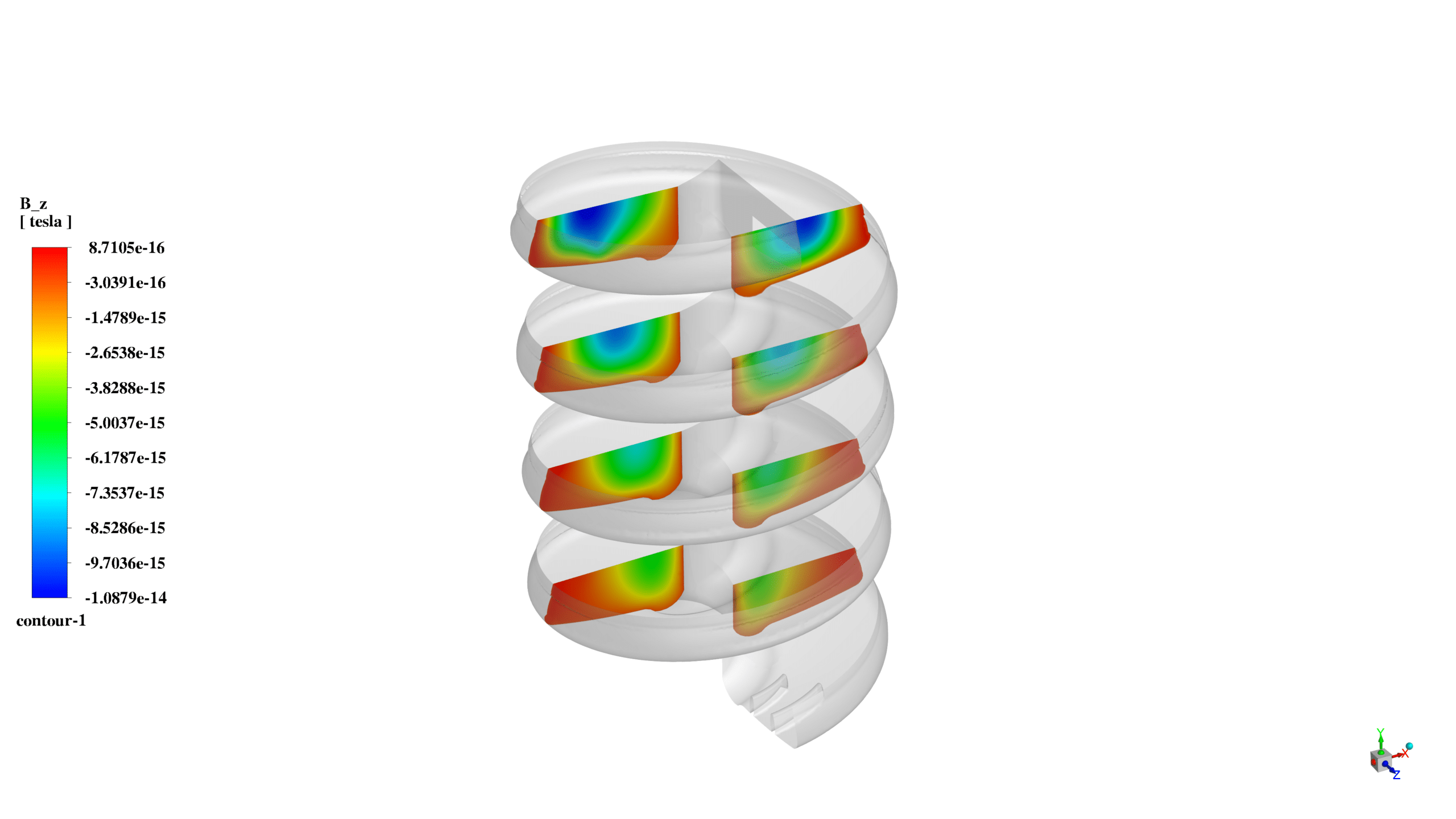
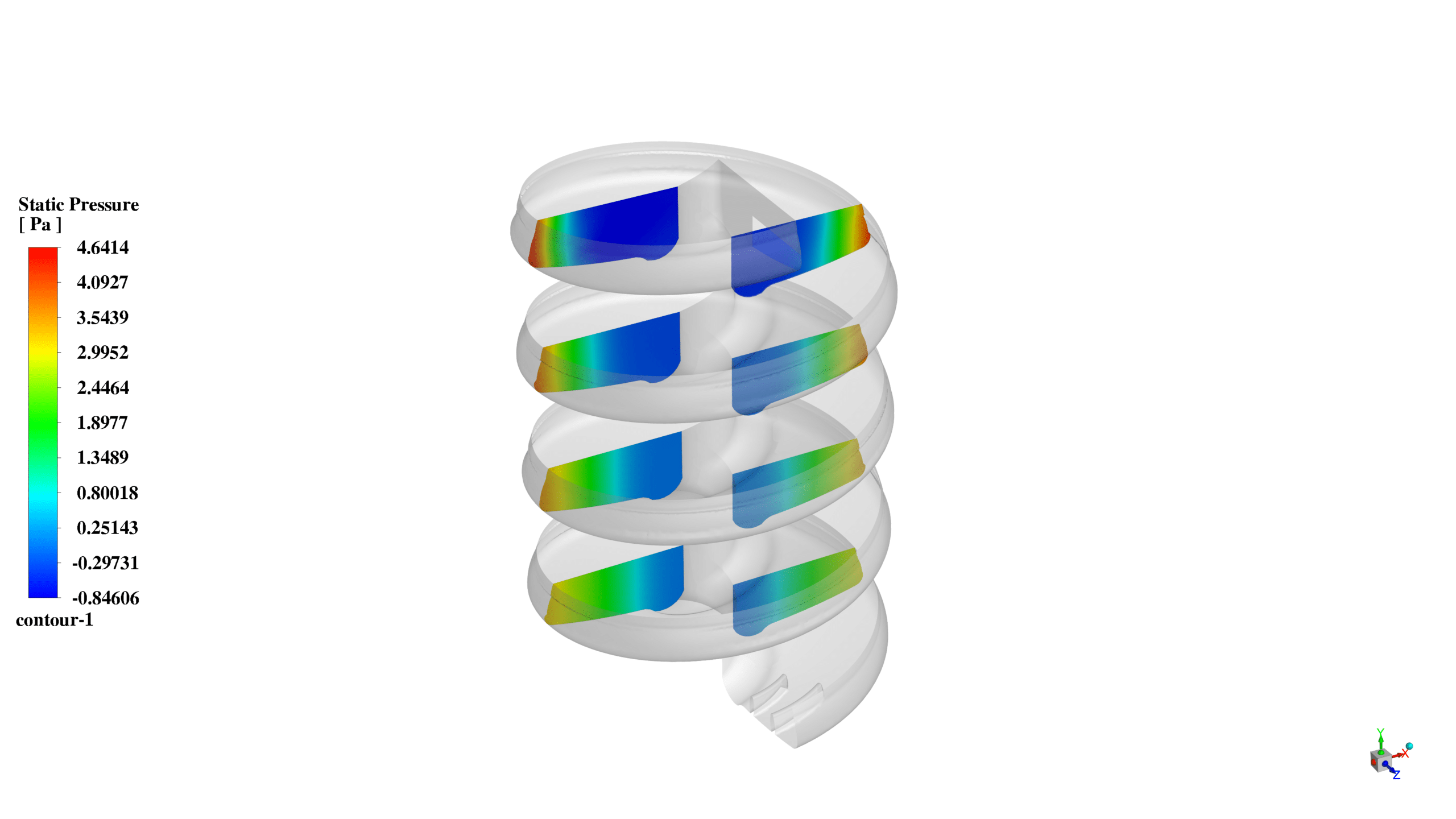
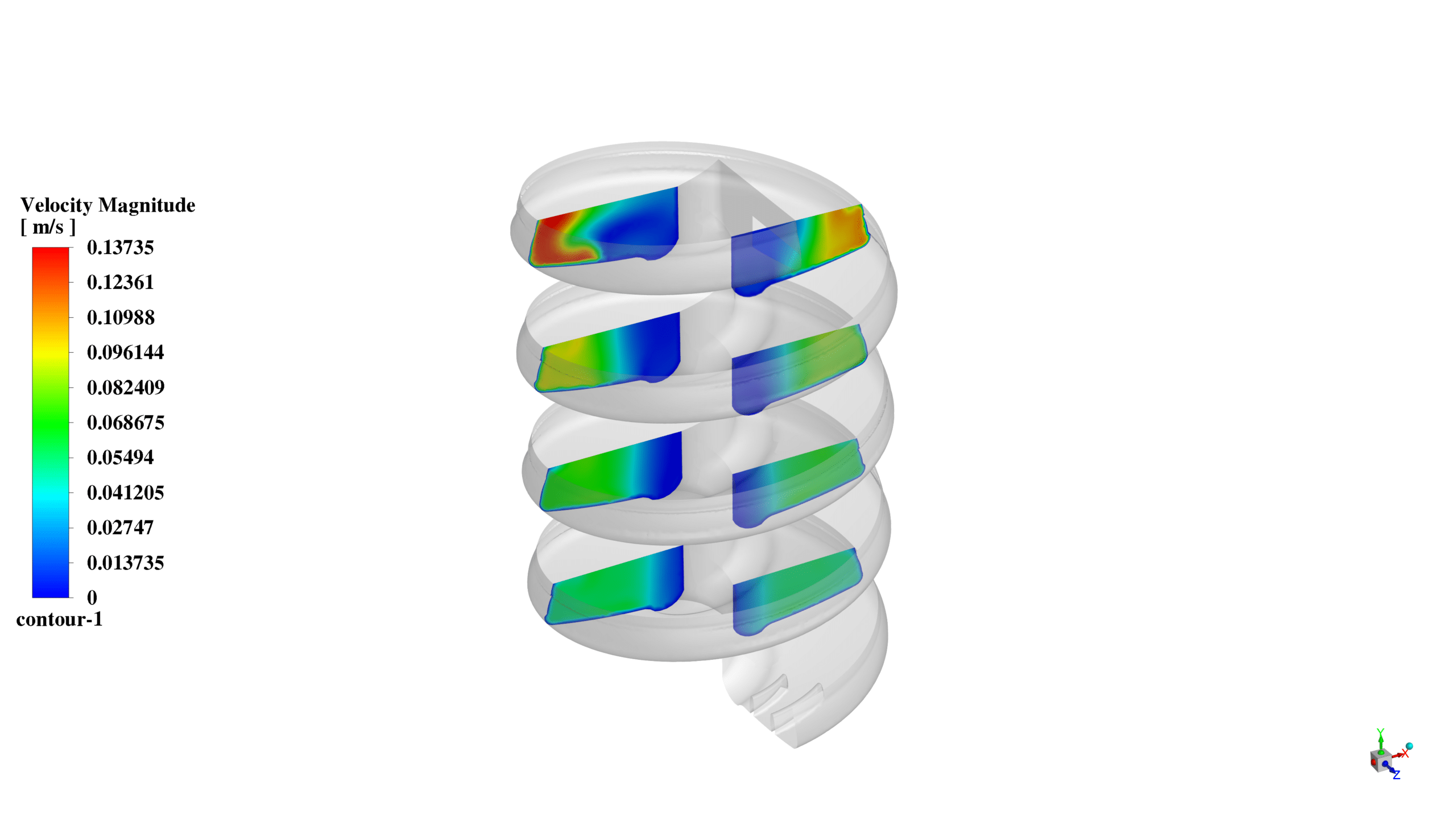
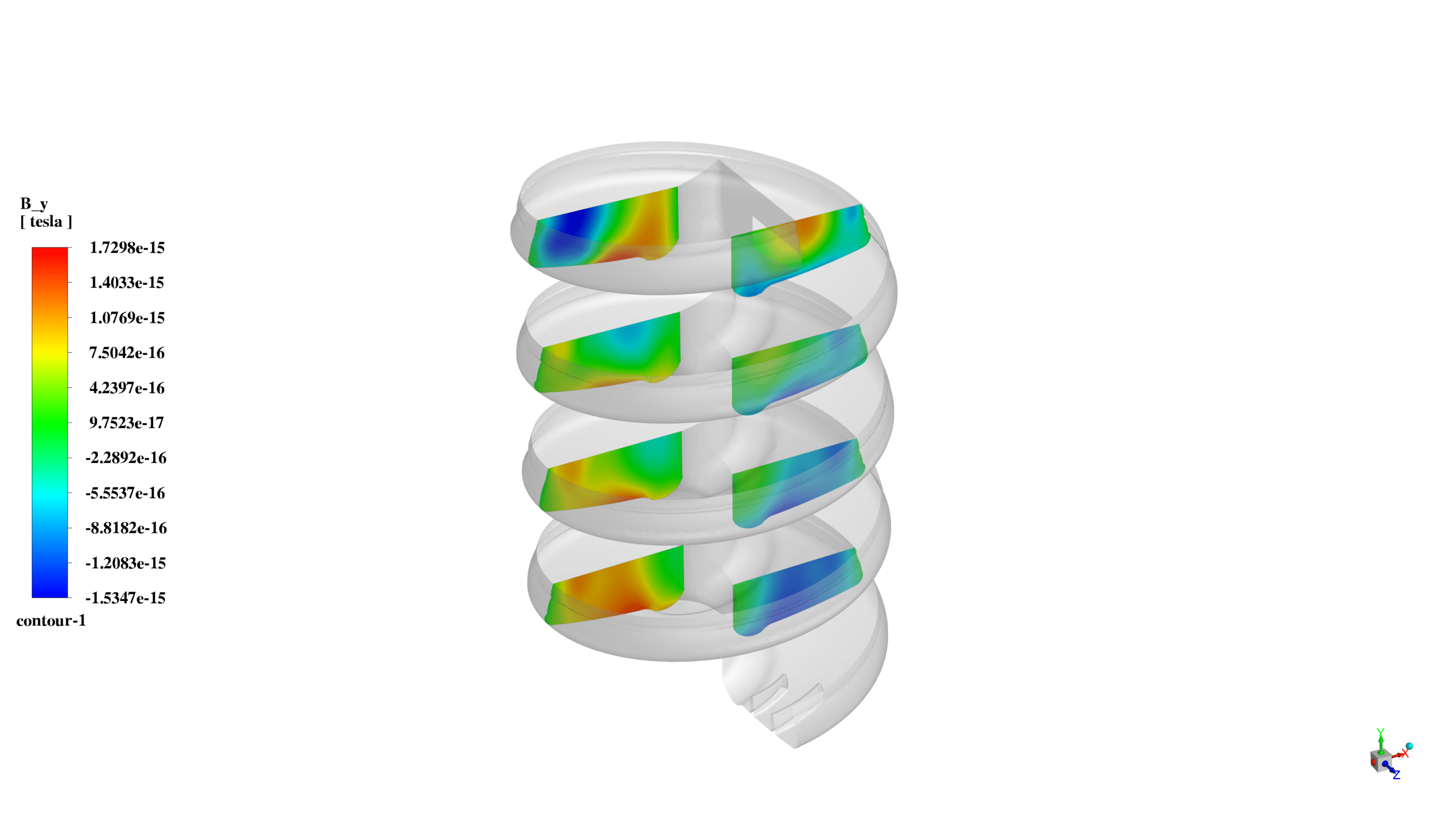
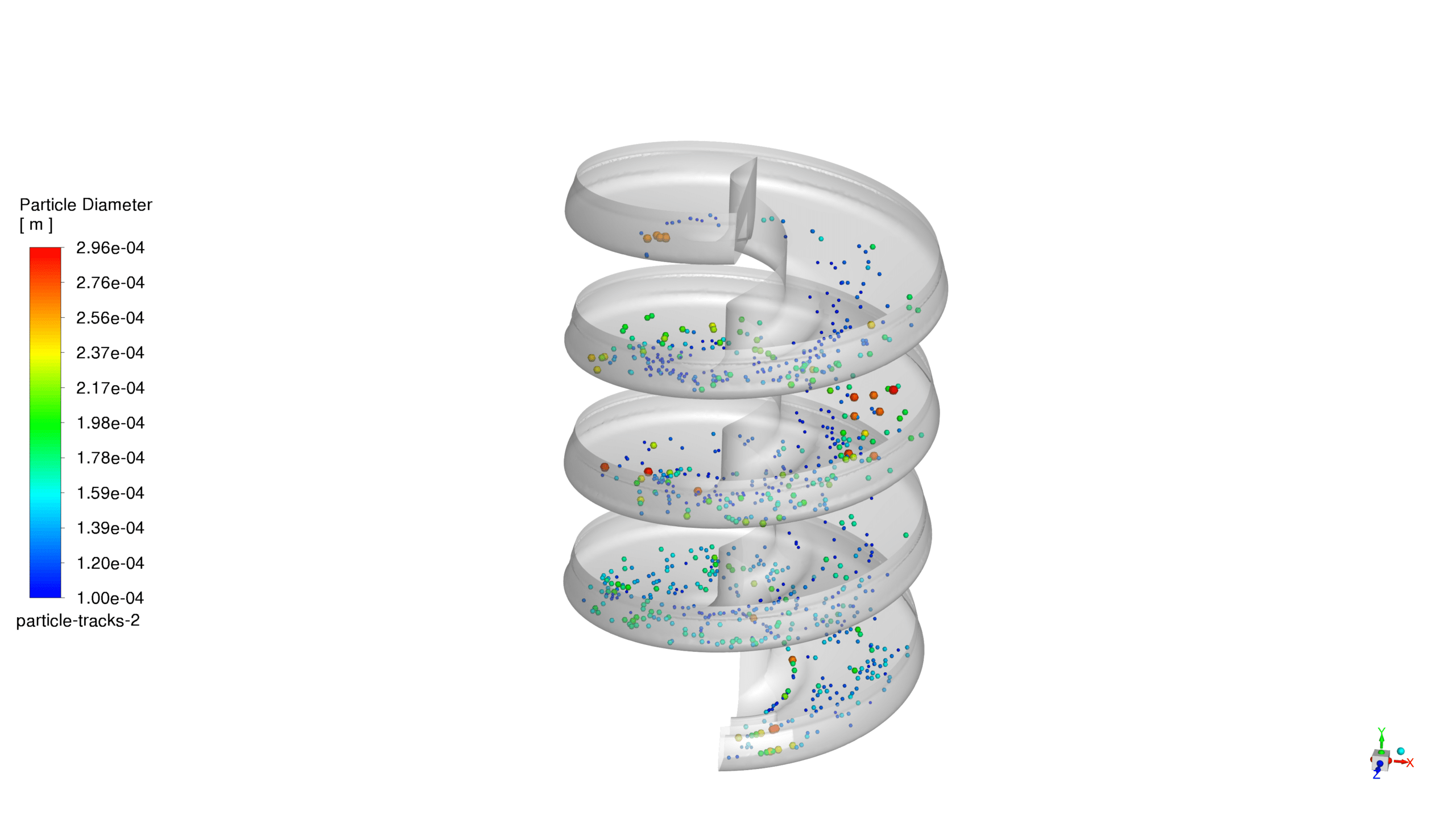
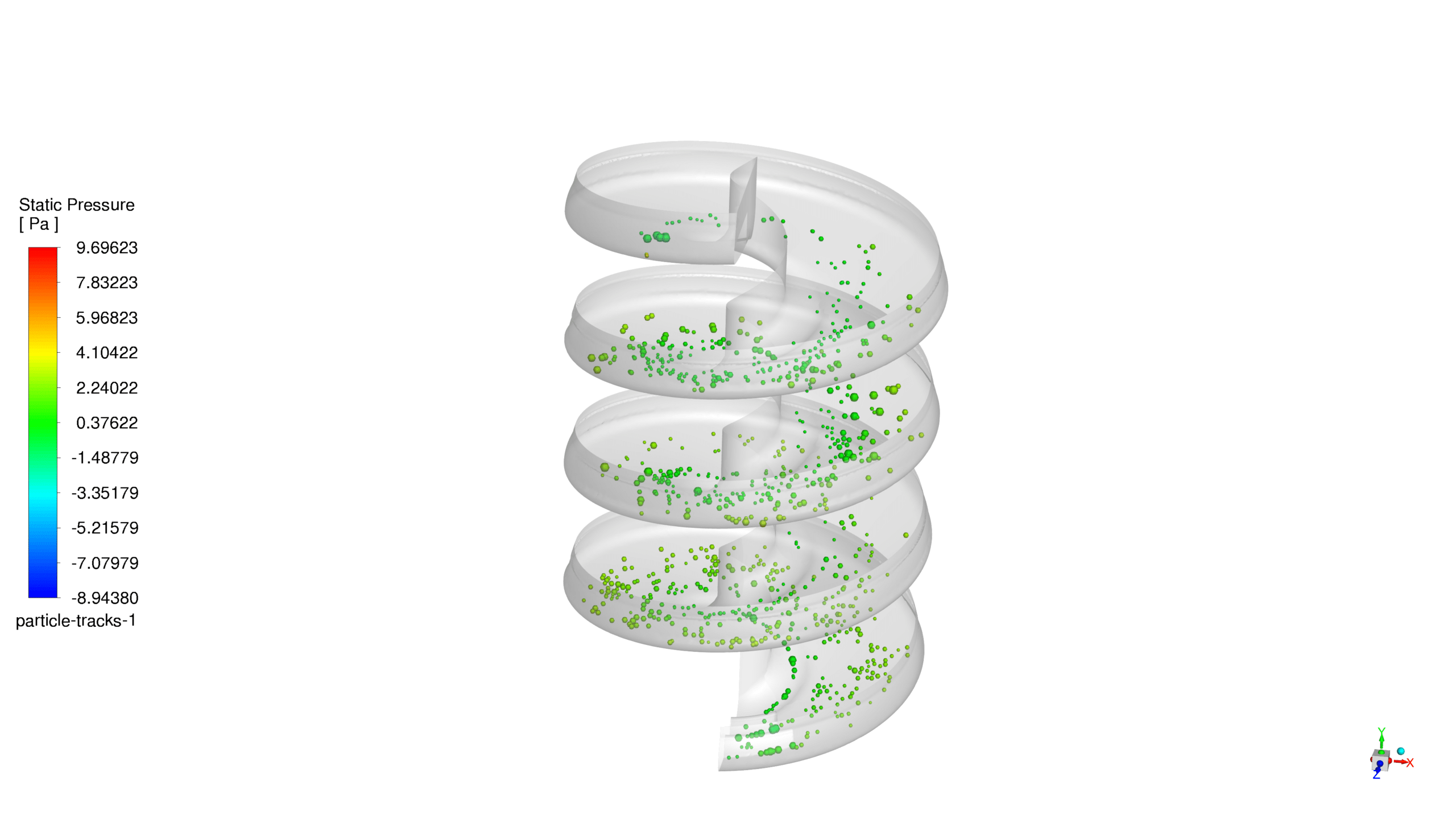
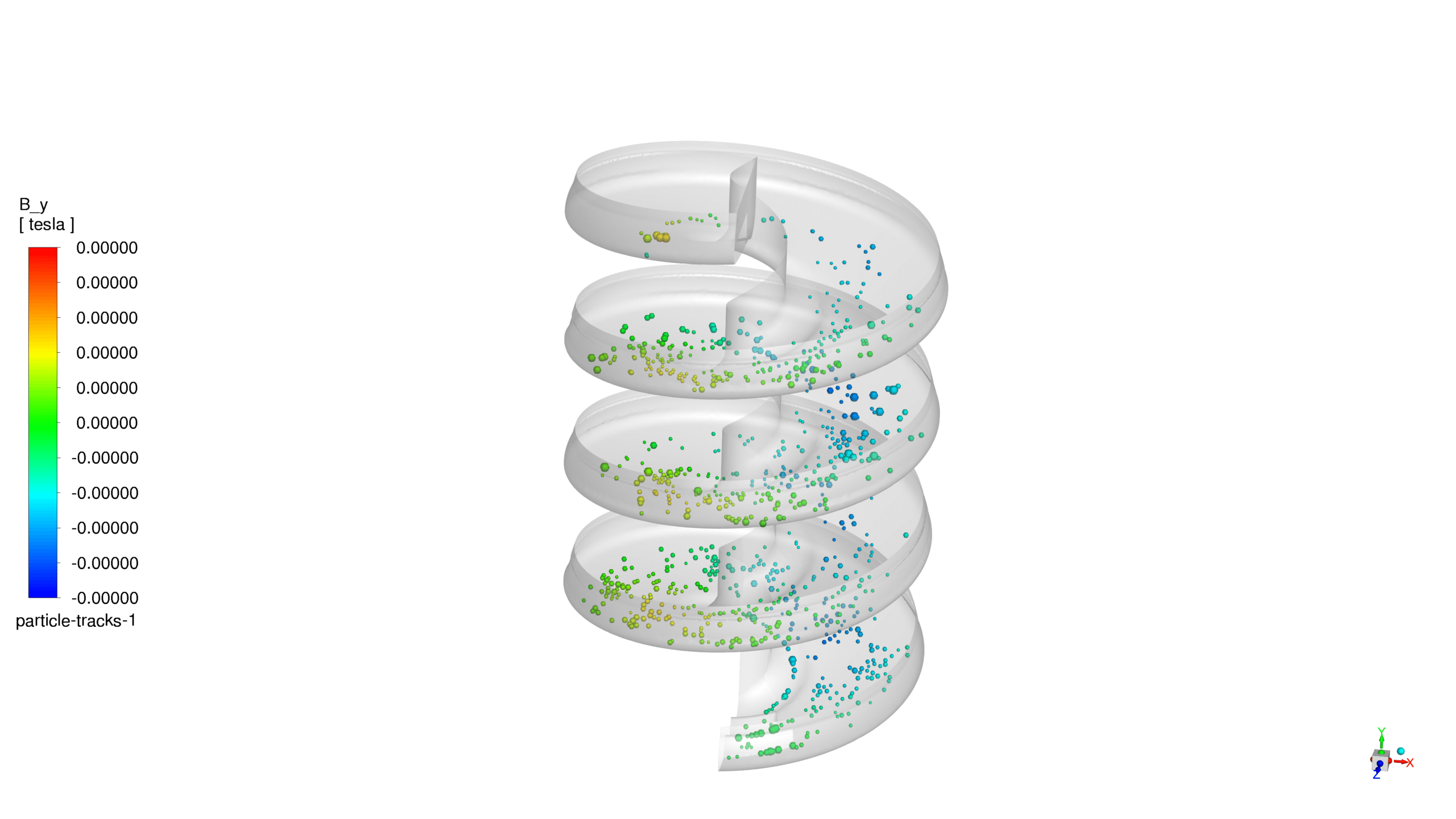
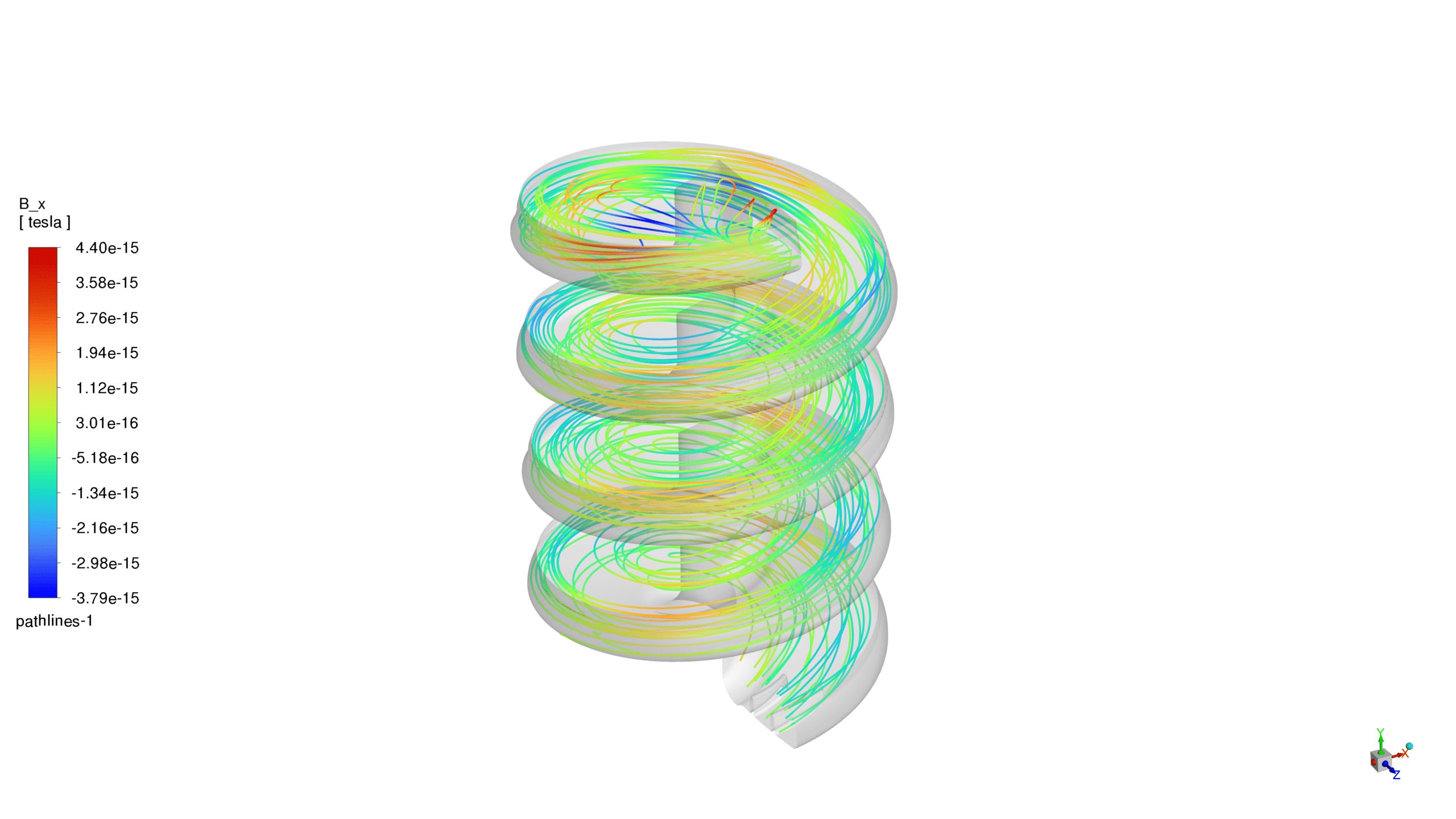
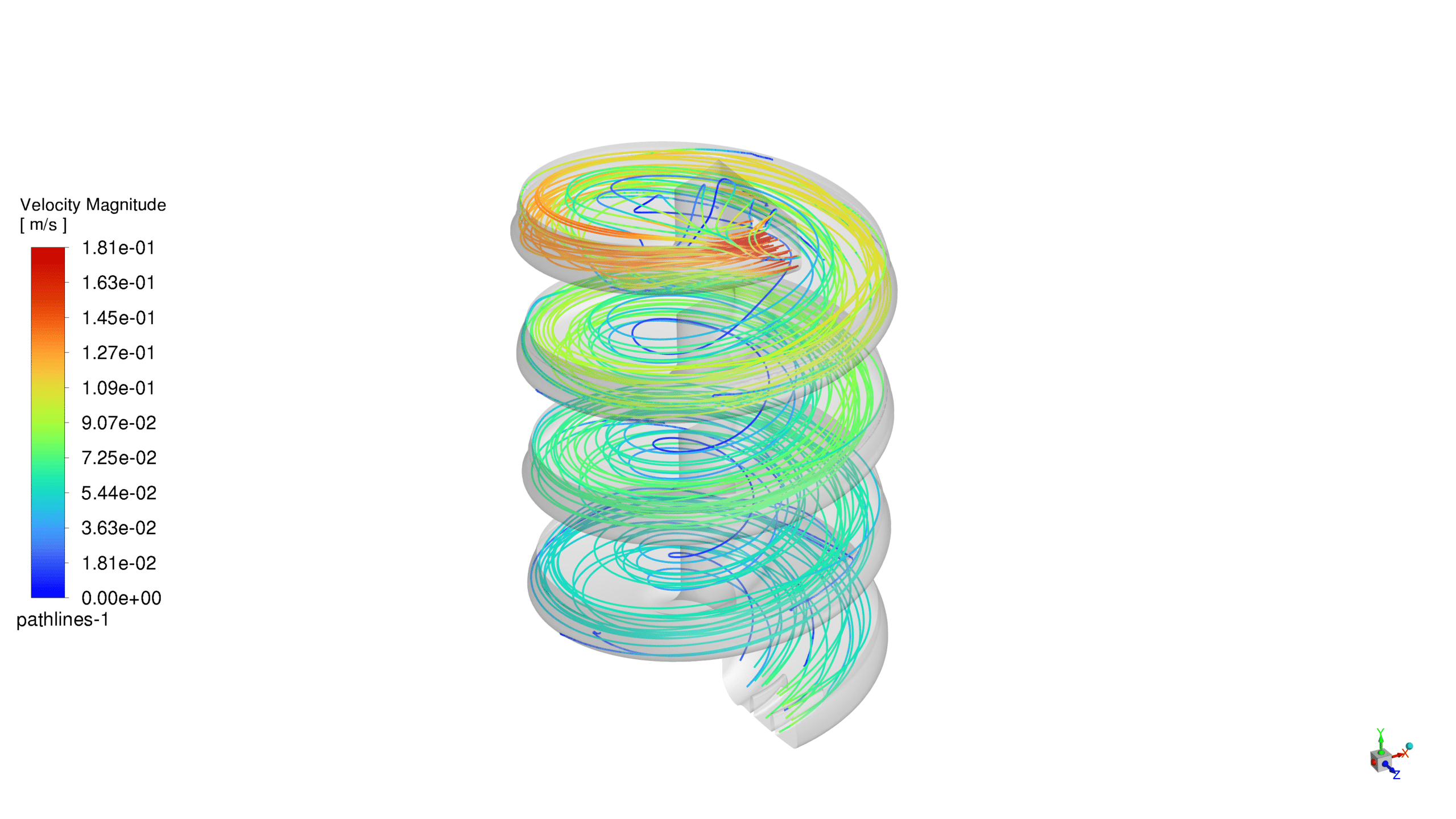

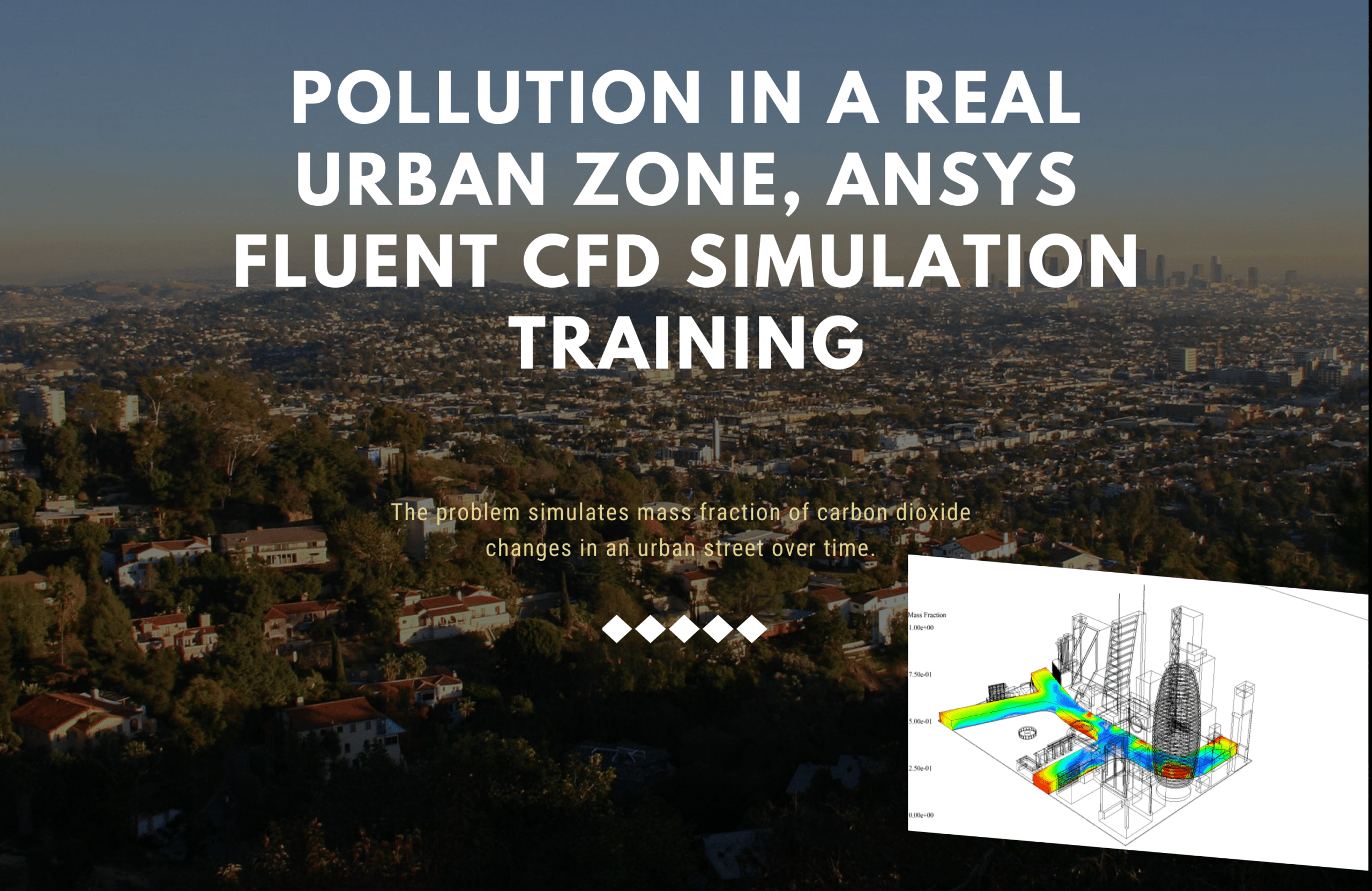

Reviews
There are no reviews yet.